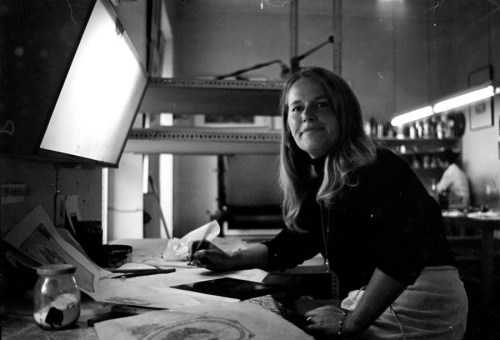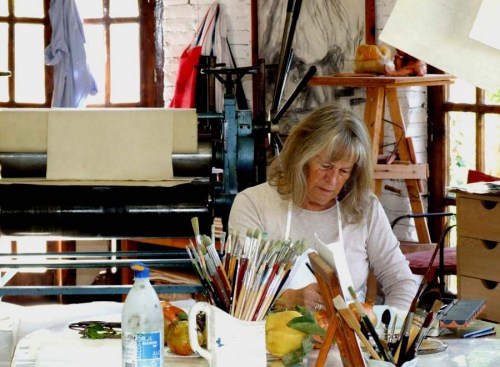 .
.
Your first portfolio is a milestone. This is the point where you’ve practiced enough printmaking techniques to make a respectable showing with your first formal project. Your confidence has grown to an almost viable level—along with an equally-heightened case of nerves and apprehension. This is the big time. What subject should you choose? What techniques should you employ for this first effort? If I may offer my advice, choose a subject that is familiar to you, something you love and is close at hand. As for techniques, keep it simple. You’re just starting out. There’s plenty of time to get fancy as you go along.
Shall I tell you about my first portfolio? It was 1978 and my maestro, José García Lomas (Pepe Lomas to his friends), suggested that I might be ready to make my first portfolio of prints. I had been studying with him at the Rodríguez-Acosta Foundation in Granada for more than two years. Pepe offered to guide me through process of making the portfolio. What a luxury that was.
He was delighted when I told him I had chosen a nonsense poem, The Owl and the Pussycat, by the English artist, illustrator, musician, author and poet, Edward Lear. This was a poem that, for some reason, I remembered vividly from my childhood. Pepe agreed with me that it offered splendid visual possibilities.
I must confess that the five plates that I created for The Owl and the Pussycat were not precisely simple. I worked on them for six months, pulling untold proof prints. Encouraged all along by my maestro, who wanted to see me show off the techniques he had taught me, techniques that I had practiced every weekday morning for more than two years, I went to work enthusiastically. So the etched zinc plates incorporated line work, aquatint, and soft ground. The Rodríguez-Acosta workshop had a wonderful big aquatint box with paddle bellows and we were still in the age of immortality. I suspect we all breathed a lot more resin than was good for us.
Before I even touched the first plate I did sketches for all five of them. Any comments Pepe made were always limited to technical considerations, as he always scrupulously respected his students’ artistic criteria. I started by varnishing five zinc plates and lightly etching in the basic drawings, then working the plates all up together starting with the aquatint. Though all the plates were different, this approach insured some degree of coherence across the whole portfolio.
We decided on an edition of 50 portfolios and 50 loose sets. Multiply that by five etchings plus a cover illustration and it adds up to 600 prints. Pepe insisted that the whole job be done by Angel and Pepillo, the workshop’s two printing technicians. The artists at the Foundation seldom touched the etching presses. While they did that I went off to find an offset print shop to print the cover text and colophon.
I presented The Owl and the Pussycat along with other work in an exhibition at Granada’s wonderful Palacio de la Madraza, the 14th-century building opposite the cathedral. La Madraza housed Granada’s first university and belongs to the University of Granada today.
This was the most successful portfolio I ever did.
.

































